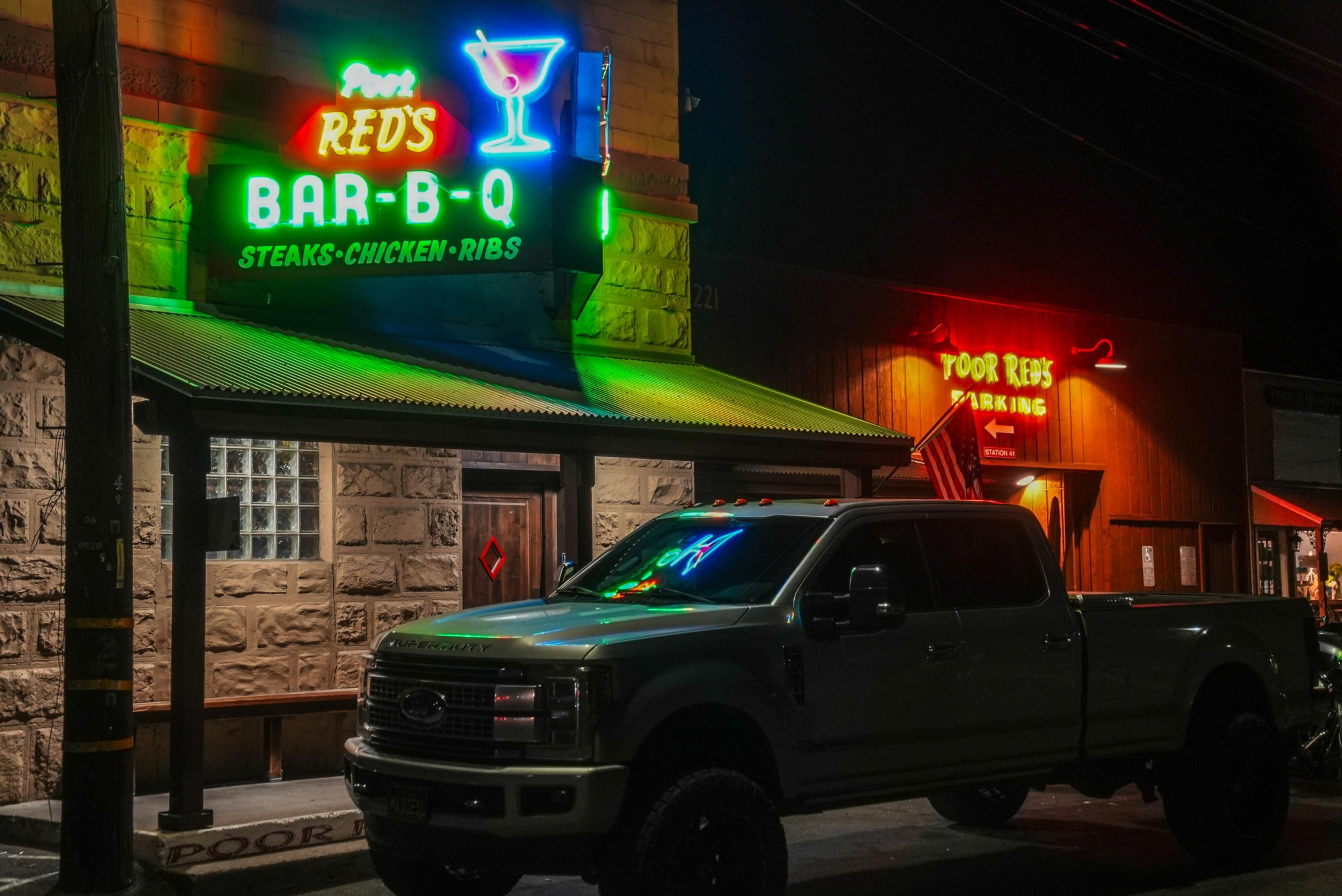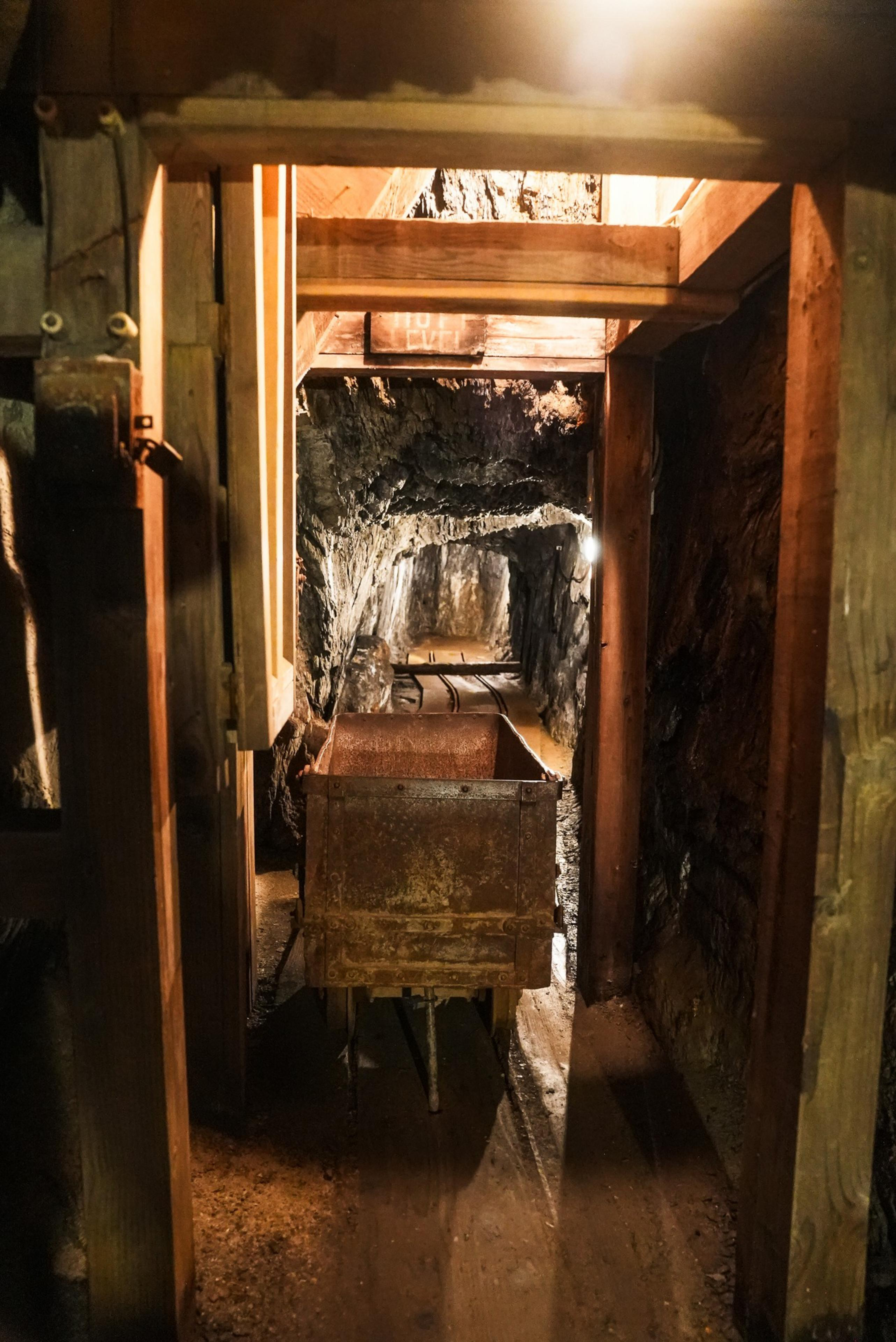Raucous roadhouse Poor Red’s Bar-B-Q (opens in new tab) has been an icon of the tiny Sierra Nevada foothills town of El Dorado ever since a game of dice some 79 years ago. As legend has it, a man named Poor Red won the joint and promptly handed it over to his business-savvy wife, Rich Opal. Today, with its rocking backyard and sepia-toned murals depicting Gold Rush days, Poor Red’s attracts bikers and anyone hungry for Death Sauce wings and a $12 Gold Cadillac (opens in new tab) — the surprisingly strong signature drink, blending Galliano, white crème de cacao, and cream with ice, served in a coupe with a bonus sidecar.

Two hours from the Bay Area, Poor Red’s sits on state Highway 49, which threads together the mining towns turned tourist hot spots Placerville, Murphys, and Groveland. With the summer heat subsiding, it’s the perfect time to visit these semi-hidden gems, filled with haunted hotels, underexplored wineries, and eccentric saloons. Here’s what you should know to plan your trip.
Stay in a haunted hotel in ‘Hangtown’
Centered on a 50-foot bell tower (opens in new tab) constructed after fires swept through in the 1850s, Placerville’s beautifully preserved Main Street is lined with galleries, brewpubs, and curio shops amid ghost ads for long-gone beer brands. Historic plaques are everywhere, and the stump of the former Hangman’s Tree (opens in new tab), a monument to harsh frontier justice back when Placerville was known as “Hangtown,” is allegedly buried under the floorboards of a defunct saloon that’s decorated with a dangling body to this day.
Gallery of 4 photos
the slideshow
Do: Just north of town, Gold Bug Park & Mine (opens in new tab) is a restored historic site complete with working blacksmith shop and a wonderfully cacophonous stamp mill designed to smash chunks of quartz. Worked until 1942, the mine dates from a later period than the Gold Rush. There are self-guided tours for anyone willing to meander down the tunnel with a hard hat.
Stay: Open since 1857, the Historic Cary House Hotel (opens in new tab)’s guest book claims luminaries like Buffalo Bill, Ulysses S. Grant, and Elvis Presley all stayed there. Known as the “Jewel of Placerville,” the brick building has a wrought-iron balcony that looks down to Main Street — and, by the way, the site may be haunted (opens in new tab).
Eat: If Poor Red’s — a 10-minute drive — sounds a bit too rowdy, Bricks Eats and Drinks (opens in new tab) offers more upscale fare, like shrimp pesto tortellini and lamb chops, with a wine list dominated by pours from El Dorado and Amador counties.
Spelunk in total darkness in Murphys
Known as the “Queen of the Sierra,” Murphys is Healdsburg without the tour buses. Just off Highway 4, the town is a favorite for weddings and a stopover for those heading to the sequoia groves in Calaveras Big Trees State Park. Smaller than Placerville, it anchors the southern end of the Sierra Foothills wine region — so wineries and tasting rooms abound (opens in new tab) on Main Street.
Gallery of 4 photos
the slideshow
Do: Even in the fall, temperatures can reach the 80s, but one spot offers a fantastic subterranean break from the heat: Mercer Caverns (opens in new tab), where it’s 55 degrees every day of the year. Yes, we’ve all visited a cave — but apart from crystalline rock formations found almost nowhere else on Earth, tours ($22 for adults, $16 for kids) are known to plunge amateur spelunkers into total darkness, replicating the 1880s conditions when Walter Mercer first guided visitors 18 stories down.
Stay: With its neon sign and wine-barrel planters, the 168-year-old Murphys Historic Hotel (opens in new tab) is the grandest pile in town, with nine of the 29 rooms in the original building fronting Main Street. It’s also a breakfast, lunch, and dinner establishment, notable for Asian American items like lumpia and pork tonkatsu among the upscale pub classics.
Eat: A mile and a half out of town, Ironstone Vineyards is an elaborately landscaped winery (opens in new tab) with a tiered, 6,000-person amphitheater whose summer concert series has booked stars like Brad Paisley and Robert Plant with Alison Krauss. A bistro with a brick pizza oven has plentiful outdoor seating in the shade, while a museum displays the world’s largest specimen of crystalline gold, weighing in at 44 pounds.
Groveland is a must for anyone heading to Yosemite
At 3,136 feet up, Groveland is the last real town on Highway 120 before the western entrance of Yosemite National Park. It has leveraged that prime location to become a destination in its own right, with cafes along raised sidewalks and seemingly infinite backcountry in almost every direction.
Gallery of 4 photos
the slideshow
Do: Yes, Yosemite Valley is magnificent, but its perennial popularity means overcrowded sights and traffic jams lasting for hours — even with reservations during peak months (opens in new tab). Nearby Stanislaus National Forest (opens in new tab) offers rafting on wild rivers, 1,000 miles of hiking trails around granite peaks, and three wilderness areas amid a landscape that’s visibly healing from the 2013 Rim fire (named for the stunning “Rim of the World” rest area on Highway 120). In the winter, there are cross-country ski trails for all levels and opportunities to cut down your own Christmas tree (opens in new tab).
Stay: A former ranger station, gambling house, and even a Greyhound bus station, the 18-room Groveland Hotel (opens in new tab) is a portrait of charm, with vintage room keys and wrap-around porches on both floors. (It, too, is allegedly haunted — by a kleptomaniac poltergeist named Lyle (opens in new tab).)
Eat: Named for its fire-proofed metal entrance, the lively, granite-walled Iron Door Saloon (opens in new tab) claims to be the oldest in California, although the real draw is above you: Pinned to the ceiling are thousands of wadded-up dollar bills, a tradition held over from the Gold Rush era, when prospectors scrawled their names on money so that, if they failed to strike it rich, they could still get drunk upon their return. Today, there are no fewer than 18 juicy burgers on the menu (opens in new tab).












